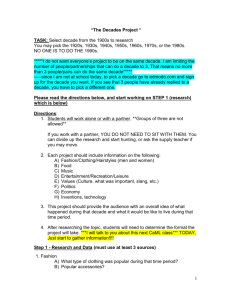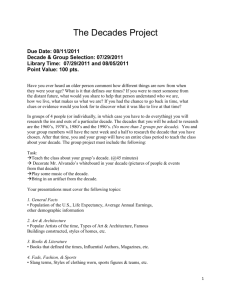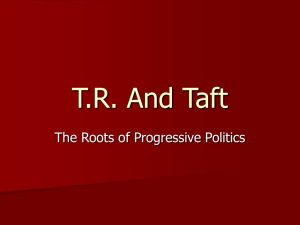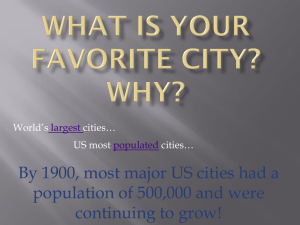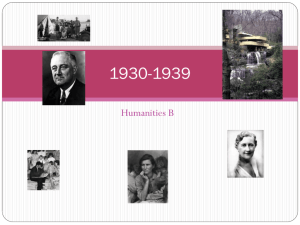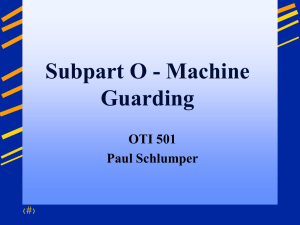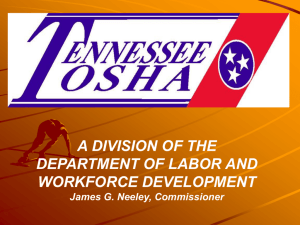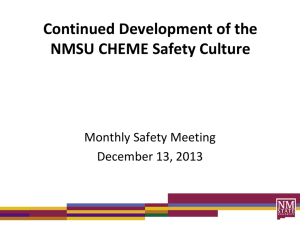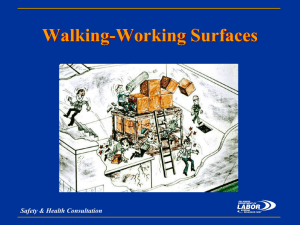American Culture and Society 1910-1919
advertisement
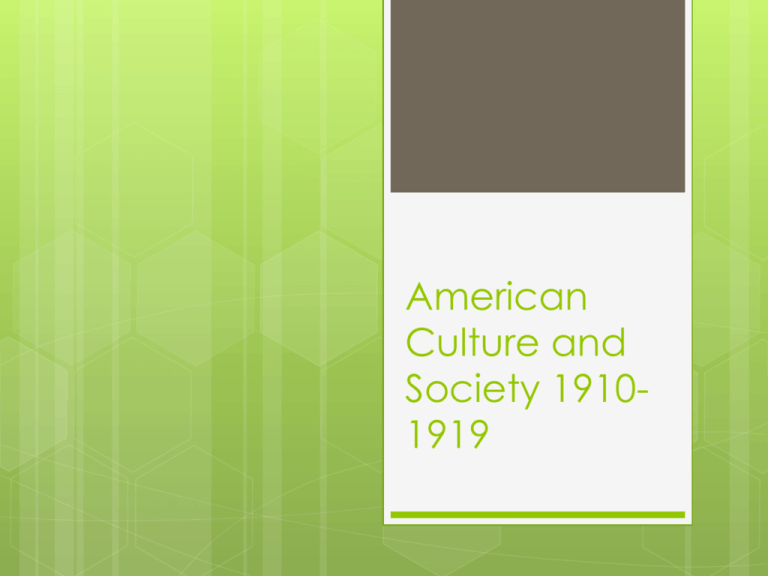
American Culture and Society 19101919 I. Background Information A. B. C. The 1910s was a decade of great change for America. It was during this decade that the United States was first considered a world leader. Many of the issues of 1910 are ones we face today 1. 2. 3. 4. 5. D. The escalation of immigration Poverty Labor Monopoly battles Work safety Child labor problems World War I - the first 'war to end all wars' raged. The 1910s were the decade America came of age. II. HISTORIC EVENTS AND TECHNOLOGY A. B. The Progressive Era lasted from 1895 until World War I. This was a period of unrest and reform. 1. Monopolies continued in spite of the Sherman Antitrust Act of 1890. 2. Social problems flourished in the U.S. During the 1910s a. Labor unions continued to grow as the middle classes became more and more unhappy. b. Unsafe working conditions were underscored by the Triangle Shirtwaist Factory fire in which 145 female workers were killed. c. Children were hired to work in factories, mills, and mines for long hours in unsafe and unhealthy conditions. d. Though efforts to pass a federal law proved unsuccessful, by the middle of this decade every state had passed a minimum age law. A commission found that up to 20% of the children living in cities were undernourished 4. Education took second place to hunger a. Only one-third enrolled in elementary school b. Less than 10% graduated from high school 5. Women were also striving for equality. a. The first suffrage parade was held in 1910 b. The 19th amendment finally ratified in 1919 3. C. D. E. The Over There decade meant more than just sending our 'boys' over to fight during WWI. America became the most highly industrialized country during this time. Mass production of cars created a nationwide prosperity and resulted in one of the most profound social changes in America's history. F. Popular culture became a lucrative national product for the United States 1. 2. 3. 4. G. All over the world people were dancing our dance crazes Listening to our jazz tunes Wearing our fashions Falling for our pop fads, and buying our products. Tobacco was a big business, with immigrants to New York City accounting for 25% of the tobacco purchasing. H. I. The sinking of the Titanic on April 15, 1912 when more than 1500 people lost their lives. The first moving assembly line 1. 2. J. K. L. Began in 1914 In 1915, the one millionth Model T ($345) rolled off the assembly line. Initiation of the National Park Service and Prohibition (1919). Jim Thorpe, an American Indian, won gold medals at the Olympics The Girl Scouts of America were formed. III. FADS & FASHION A. The Gibson Girl was at the last year of its popularity. 1. 2. B. Women were beginning to want to think more of comfort during the 1910s Although many quickly fell for the hobble skirt. Fabrics became lighter, colors are brighter, and styles are looser. 1. 2. Lowered necklines became popular Sales of cold cream and lemon extract escalate. C. D. E. F. G. H. The Tea Gown was worn 'at home.' The sack, the sheath, oriental costumes, harem trousers, and the Hellenic tunic were all introduced. When the war began, fashion design and export came to a standstill. "Made in America" fad began. New materials and technologies made more colors available. The suffragettes started a more comfortable fashion 1. 2. 3. No more hobble skirt Lots of pockets. Hemlines inched up (to show ankles). IV. Presidents A. B. William Howard Taft Woodrow Wilson 1. 2. the 28th President of the United States, from 1913 to 1921. A leader of the Progressive Movement, a. b. 3. 4. he served as President of Princeton University from 1902 to 1910 the Governor of New Jersey from 1911 to 1913 With Progressive ("Bull Moose") Party candidate Theodore Roosevelt and Republican nominee William Howard Taft dividing the Republican Party vote Wilson was elected President as a Democrat in 1912. V. Arts and Literature A. Three fundamental concepts concerning art in America were seriously reconsidered between 1910 and 1920. 1. 2. 3. B. What 'art' is Who makes decisions about standards How art is shared with the viewing public. The City became a subject for the realist movement 1. 2. Artists painted scenes of the less glamorous aspects of modern life They depicted gritty New York scenery and lower class residents C. The intellectual revolt against materialism spawned several books 1. 2. D. The Education of Henry Adams assailed the nation's failure to live up to its founders' ideals The Economic Consequences of the Peace by J.M. Keyes A single copy sold for $1.90 - industry insiders felt the public would never pay $2 for a book
